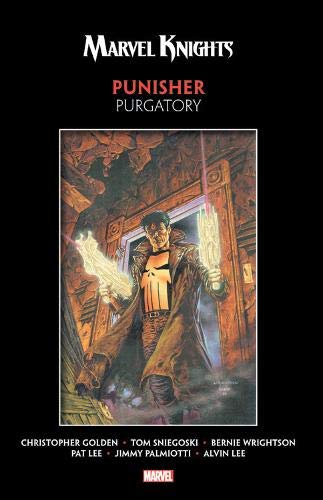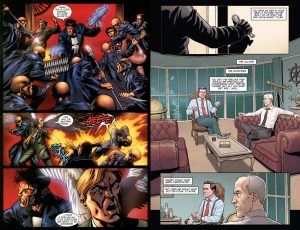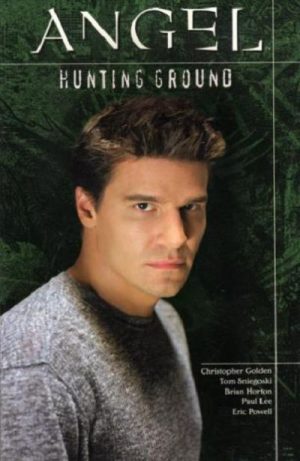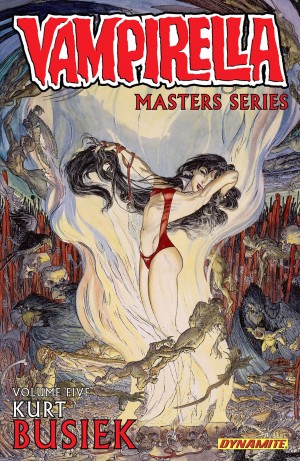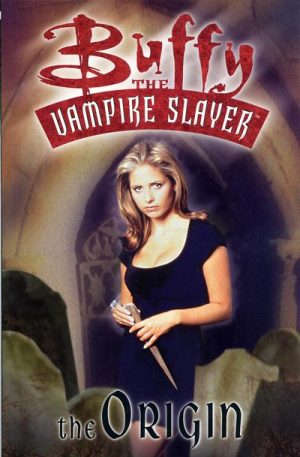Review by Frank Plowright
By 1998 there was little doubt that the Punisher was past his sell-by date. Overuse by uninspired creators had reduced his war on crime to a succession of mundane repetitive encounters. While it was clear something was necessary to re-energise the character, surely only co-writers Christopher Golden and Tom Sniegoski thought the solution was to have the Punisher commit suicide and be returned to Earth as a supernatural agent of vengeance. In practice this means he carried on much as before, except with a glowing sigil on his forehead, glowing red eyes, and his weaponry is supplied by heaven. Apparently.
Not content with that, Golden and Sniegoski attempt to redefine the Punisher’s origin as a long-form plan concocted in Hell and now coming to fruition, and there’s an early scene where the Punisher locates and attempts to kill his family’s guardian angel. Conflicts between heaven and hell have worked throughout literary history, sometimes on an epic scale, but shoehorning the Punisher into what’s essentially a horror story is a woeful misunderstanding of who the character is.
Still, if horror is on the agenda then who better to draw it than Bernie Wrightson? Unfortunately, though, this isn’t the Wrightson who redefined the possibilities of horror comics in the early 1970s, but an artist who’s stripped his style down to the basics. It surely made financial sense for him, and there is the occasional glimmer of lush technique, but this is ordinary art. Even so, it’s a rare graphic novel where Wrightson isn’t the best artist on show, but Pat Lee on the second story outshines him.
The teaming with Wolverine is an improvement beyond the art, previously issued as Wolverine/Punisher: Revelation. The Punisher and Wolverine both find themselves investigating the threat of a long-imprisoned woman whose aura causes illness and death on a massive scale. Golden and Sniegoski’s plot has a greater originality, and while still depending on Frank Castle’s new celestial powers, it’s a more imaginative use of them. However, it’s the first story that people remember, and surely nowhere near as many bothered with the second at the time.
After this misfire left the Punisher franchise in a worse state than before, a pretty astonishing state of affairs, Marvel let Garth Ennis and Steve Dillon loose on Frank, and in short order everyone forgot Purgatory. Why in 2019 anyone thought issuing a graphic novel was a good idea is a new mystery, especially as the second story has been part of Wolverine vs. Punisher two years beforehand.
